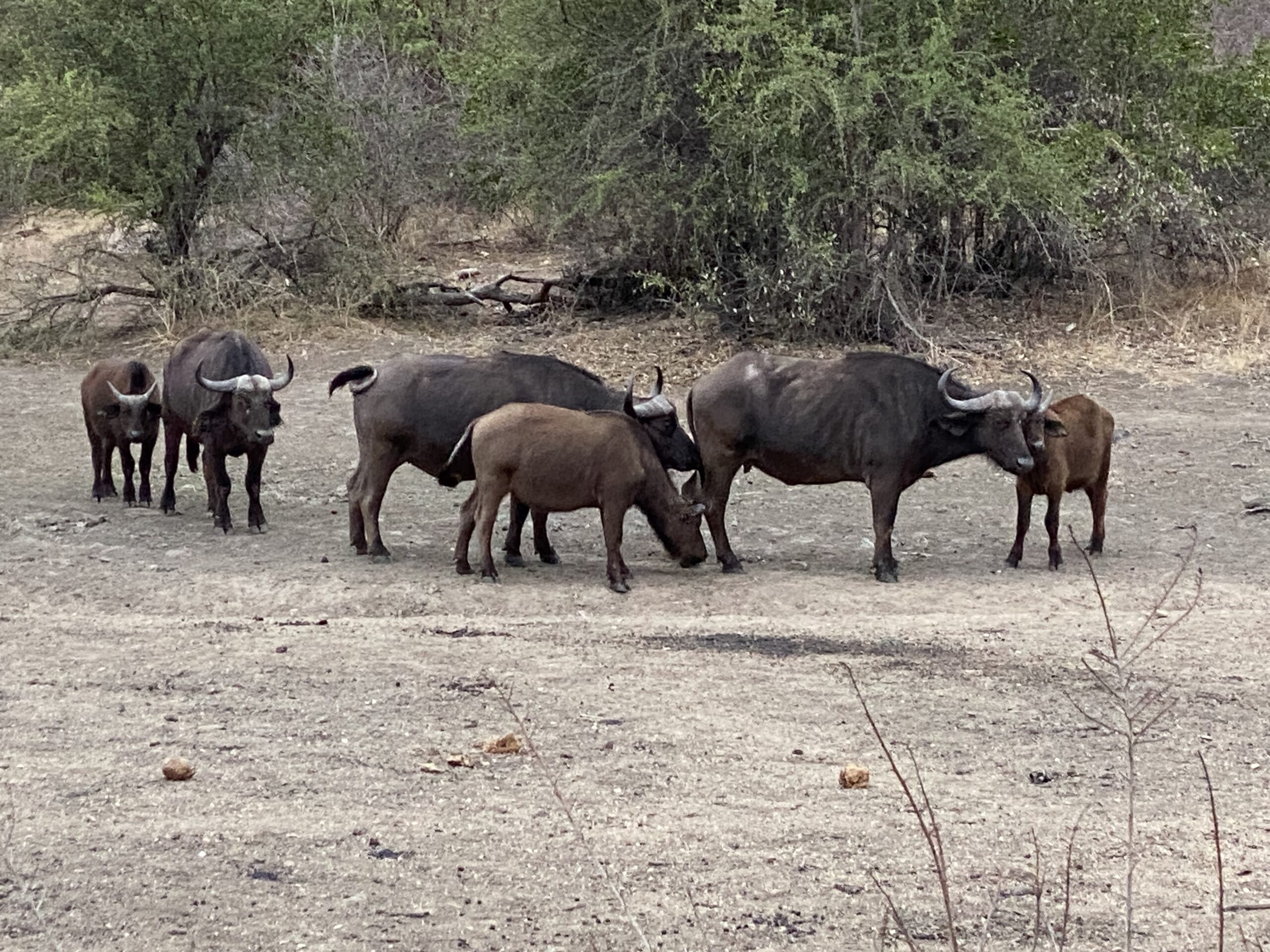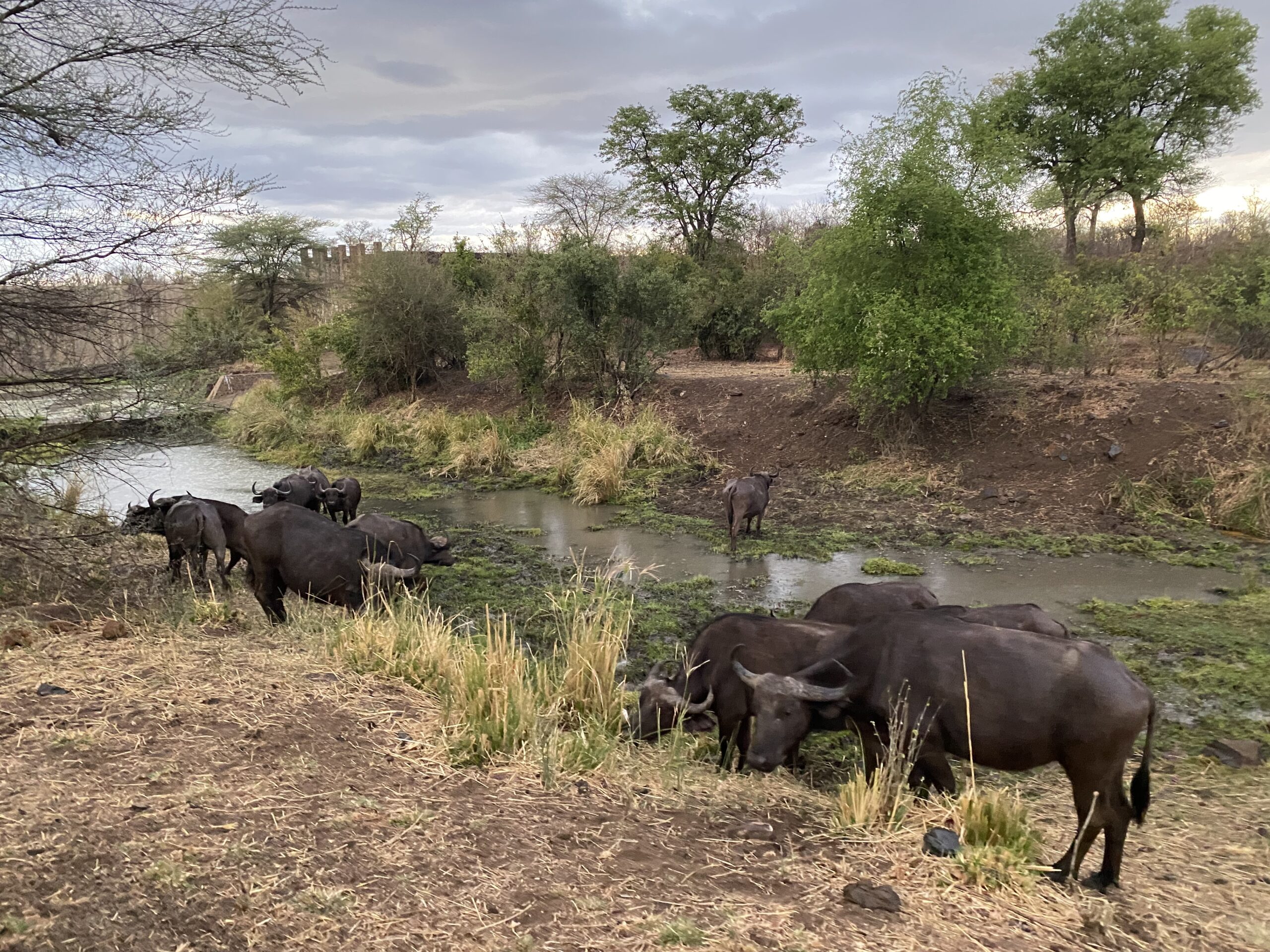I was very fortunate to recently visit South Africa and Zimbabwe after a veterinary conference. Since 100% of the pet owners we meet are animal lovers, I thought I would share some information and pictures about his incredible trip.

They may not be the most common animals you think about when you list South African animals, but Cape Buffaloes are an important species.
So much, that they are part of Africa’s must-see “Big Five,” along with the lion, the leopard, the elephant and the rhinoceros.
Known for their massive build, social intelligence, and fierce temperament, these animals play a pivotal role in South Africa’s ecosystems.
Let’s discover what makes them so extraordinary and respected.
Cape Buffaloes are the Heavyweights of the Wild
Cape buffaloes are nothing short of living tanks.
Weighing up to 2,000 lbs (900 kg), they are among Africa’s heaviest land animals.
Their robust muscle structure and thick skin allow them to withstand attacks from predators, earning them the reputation of being almost indestructible.
Adult males sport distinctive horns with fused bases (think of a unibrow), known as a “boss,” that act as armor during sparring matches and battles with predators.

Strength in Numbers
Cape buffaloes are herd animals through and through.
Their social structure is both complex and fascinating.
Herds can range from a few dozen to several thousand individuals, led by dominant females.
Bulls provide protection, while older males, often called “dagga boys” (dagga means mud in Zulu), sometimes break off to form smaller bachelor groups.
These animals are incredibly protective, forming defensive circles around calves or injured members when danger looms.
Cape Buffaloes are fierce Defenders of the Bush
Cape buffaloes are both revered and feared.
Their unpredictability and short tempers make them formidable opponents.
Known to recognize and remember threats, they have been observed ambushing predators that dared to cross them.
Even lions tread carefully around a herd, as buffaloes often retaliate with surprising coordination and strength.
The Cape buffalo is sometimes called “The Black Death.”
They are considered very dangerous animals due to their unpredictable nature.
They have been known to charge humans when threatened.
In fact, they have supplanted hippos as the #1 killer of humans in South Africa.
The Fine Balance of Predator and Prey
Despite their strength, Cape buffaloes are not invincible.
Their poor eyesight makes them vulnerable, but they compensate with an excellent sense of smell, often detecting predators from a distance.
When attacked, their thick hide and muscular bodies can endure significant damage, buying time for the herd to rally together in defense.
Cape Buffaloes have Daily Rituals and Dietary Needs
As herbivores, Cape buffaloes graze primarily on grass, though they adapt to other plants during the dry season.
Water is a lifeline for these animals, and they must drink daily to survive.
It’s no surprise, then, that they’re often found near rivers and waterholes, especially during South Africa’s dry months.

Cape Buffaloes’ Life and Legacy
Cape buffaloes have a remarkable reproduction cycle.
Females give birth to a single calf after an 11-month gestation period (a cow is about 9 months), usually timed with the rainy season, when food is abundant.
These calves grow up in tightly-knit herds, learning the intricate social bonds that define their communities.
With a lifespan of up to 20 years, these animals leave a lasting impact on the grasslands they inhabit.
Cape Buffaloes are Ecosystem Engineers
Cape buffaloes play a critical role in maintaining grassland ecosystems.
As large grazers, they help control vegetation, creating habitats for smaller herbivores.
However, their role is not without complications.
Buffaloes are carriers of diseases like bovine tuberculosis, posing a risk to wildlife and livestock.
Cape Buffaloes’ Conservation Challenges
While Cape buffaloes are sometimes targeted by poachers and trophy hunters, regulated hunting can contribute to conservation funding.
Their presence in South Africa’s reserves is a testament to ongoing efforts to balance ecological health with human interests.
Cape buffaloes are more than just impressive beasts.
They are vital to the bush.
Whether standing as protectors of their herd, grazing to maintain the balance of the ecosystem, or facing the challenges of a changing world, these animals embody resilience and strength.
We can’t help your Cape buffalo, but if you would like to learn how we can help your cat or your dog with safe surgery and anesthesia, please contact us through www.LRVSS.com
Never miss a blog by subscribing here: www.LRVSS.com/blog
Phil Zeltzman, DVM, DACVS, CVJ, Fear Free Certified
